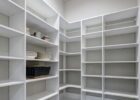Electricity bills are typically a significant expense for Australian households. The good news is there are many ways to reduce your bills. But the first step in reducing your household’s energy is to discover which appliances consume the most electricity.


Naturally, energy use will differ from household to household, based on member habits and the model of appliances used. However, as a general reference, this article discusses the most expensive appliances to operate in Australia, hopefully encouraging Australians to switch to more energy-efficient methods.
What are the Most Energy-Intensive Appliances?
Heating and cooling are the most energy-intensive appliances in Australian households, accounting for around 38-40% of overall electricity consumption. Hot water comes in second at 25%, followed by ‘other appliances’ at 16%. Lighting contributes to around 10%. Finally, refrigerators and freezers alone consume about 7% of your electricity.
But let’s take a deeper look at the two most straight forward segments where households can reduce appliance energy use: heating & cooling and lighting.
Heating and Cooling in Australian Homes
Australian households consume a significant amount of electricity to heat and cool their houses – roughly 38-40% of overall energy use goes to HVAC appliances. This is unsurprising, given that many Australians cannot get through an Australian summer without their beloved air conditioner. Still, there are a few things homeowners can do to save energy and money regarding heating and cooling.
When using heating and cooling appliances, keep an eye on the system’s temperature, as even slight changes can dramatically increase an electricity bill. For example, if you increase heating by one degree, your energy consumption will rise by five to ten percent. Ideally, your cooling should be above 25°C, and your heating should be between 18°C and 20°C.
In addition, the heating and cooling system you choose has a significant influence on your household’s energy bills. For example, a ceiling fan installation offers many benefits. With a ceiling fan installation, you will feel around a 3°C cooler, and a ceiling fan installation is inexpensive to purchase and operate, costing only around 2 cents per hour.
Or use your air conditioner in combination with a ceiling fan installation. Before turning on your air-con, also turn on the fans, as ceiling fan installation scan increase the efficiency of cooling systems since they circulate air.
Plus, ceiling fan installations are also helpful in the winter! Homeowners can use the ceiling fan installations to circulate heated air, as the fans force air downwards to enhance heating efficiency. The ceiling fan installation or remote control should clearly show the winter setting to reverse airflow if this option is available.
Lighting in Australian Homes
Lighting contributes to around 10% of home power use and 18–40% in commercial buildings. Individual incandescent light bulbs may not consume much power, but the expenses can rapidly mount up. Many light fixtures employ several bulbs, and it’s easy to forget to turn off lights when you’re not using them.
While, of course, when feasible, switching to natural light and turn off the lights when not using them are all critical. But making the switch to energy-saving downlight installations, such as LEDs, will result in considerable energy savings and lower power costs.
LED downlight installations provide greater value for money than traditional incandescent and halogen light bulbs. LED downlight installations consume around 75% less energy to generate the same amount of light and last much longer before they need to be replaced.
Even a tiny adjustment like LED downlight installations may have a tremendous impact on your home’s electricity bills. For example, replacing ten halogen light bulbs with an efficient LED downlight installation may save about $650 over ten years on your electric bill.
How Do I Determine the Energy Efficiency of an Appliance?
Standardised Energy Ratings, which come with all appliances sold in Australia, are the best way to monitor your appliances’ usage. Replacing outdated appliances with better, more efficient models can help your household save a lot of money, as the more energy-efficient an appliance is, the less energy it needs to operate.
The energy rating labels are part of a government-industry programme to encourage customers to buy energy-efficient appliances and equipment. The energy rating labels enable customers to determine how much a device will cost to operate and how energy-efficient similar models are in comparison. The energy usage and product size are used to establish an appliance’s star rating.
Consider a ceiling fan installation: the cooling efficiency of a ceiling fan model is the amount of cooling capacity (output) per unit of energy used (input). The effectiveness of a television is proportional to its screen size. In most cases, algorithms assign one star to the lowest-performing items, while higher-performing ones receive more stars.
Top Electricity Saving Tip: Check for Government Assistance
While many electricity-saving tips offer basic and uncomfortable solutions such as reducing your energy use, forcing Australians to live unpleasantly. Luckily, with a bit of research, Australians can continue to use their electricity pleasurably if they take advantage of various rebates and concessions to help them save money on their energy bills!
Australian households may be eligible for different sorts of rebates and concessions depending on the state or territory they live in. Speak with your energy provider for the most up to date information on the concessions and rebates you may be entitled to.
In general, rebates and discounts are offered to:
- Customers with specific medical problems,
- Low-income earners,
- Retirees.
On the Australian government rebates page, you can see if they provide any refunds or help specifically for your circumstances. For example, in April 2018, Australia’s Energy Ministers decided to enhance the lighting energy-efficiency legislation by phasing out inefficient halogen lamps (light bulbs) and implementing minimum LED downlight installation standards in accordance with European Union (EU) requirements in Australia and New Zealand. These Australian regulations for LED downlight installations are expected to come into effect in 2022-2023.
The NSW Government Energy Savings Scheme, for example, created financial incentives for eligible households to replace old lights with new LED downlight installations. Plus, it is estimated that the phase-out of incandescent light bulbs and a switch to LED downlight installations will save the average household 300 kWh and $75 per annum.
In Need of Energy Efficient Electrical Upgrades in Sydney?
Energy-efficient upgrades are necessary and beneficial for all households, lowering electricity bill costs and ensuring more environmentally efficient homes.
No matter if you want to get started on LED downlight installations and ceiling fan installations immediately or if you are unsure how to make your household more efficient. Expert electricians in Sydney will come to your property and advise you on your specific circumstances detailing the electrical upgrades, which will help you save the most.



